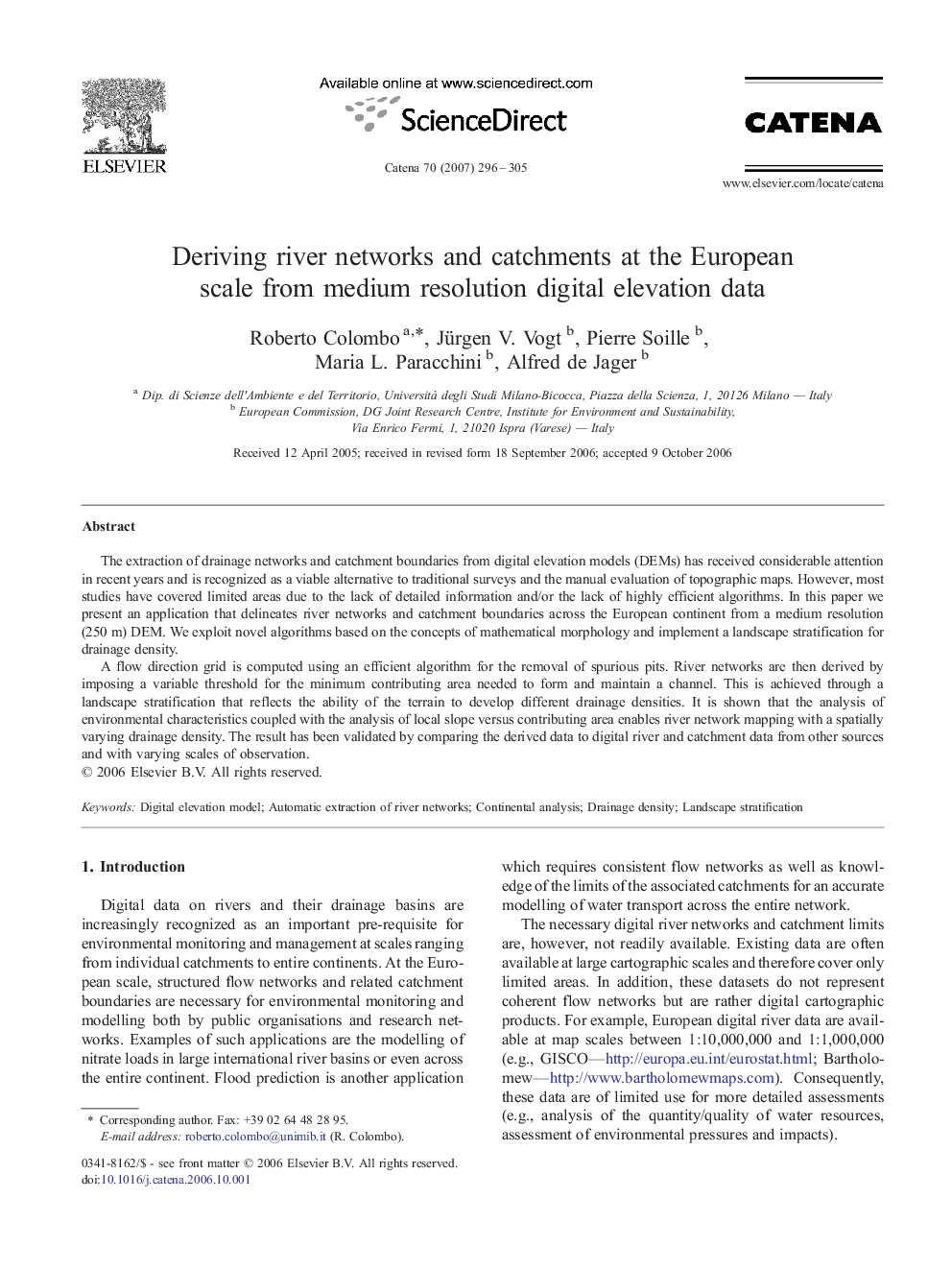| Article ID | Journal | Published Year | Pages | File Type |
|---|---|---|---|---|
| 4572476 | CATENA | 2007 | 10 Pages |
The extraction of drainage networks and catchment boundaries from digital elevation models (DEMs) has received considerable attention in recent years and is recognized as a viable alternative to traditional surveys and the manual evaluation of topographic maps. However, most studies have covered limited areas due to the lack of detailed information and/or the lack of highly efficient algorithms. In this paper we present an application that delineates river networks and catchment boundaries across the European continent from a medium resolution (250 m) DEM. We exploit novel algorithms based on the concepts of mathematical morphology and implement a landscape stratification for drainage density.A flow direction grid is computed using an efficient algorithm for the removal of spurious pits. River networks are then derived by imposing a variable threshold for the minimum contributing area needed to form and maintain a channel. This is achieved through a landscape stratification that reflects the ability of the terrain to develop different drainage densities. It is shown that the analysis of environmental characteristics coupled with the analysis of local slope versus contributing area enables river network mapping with a spatially varying drainage density. The result has been validated by comparing the derived data to digital river and catchment data from other sources and with varying scales of observation.
